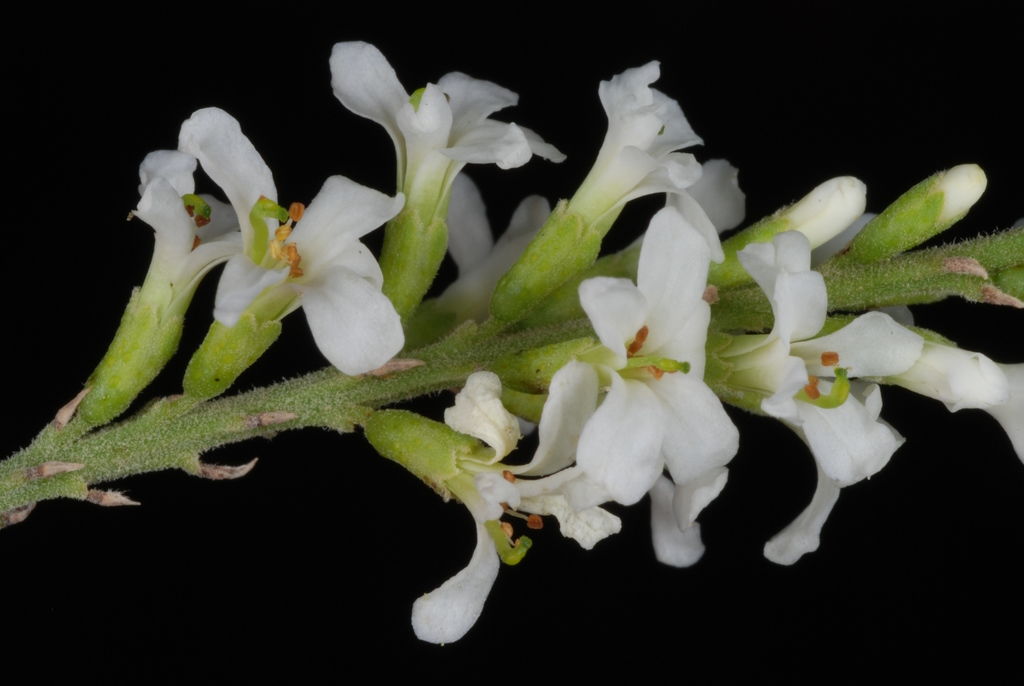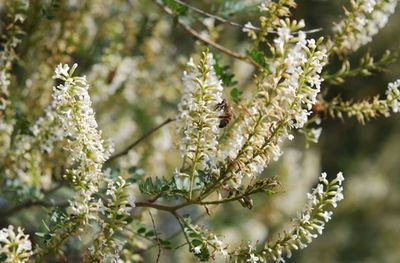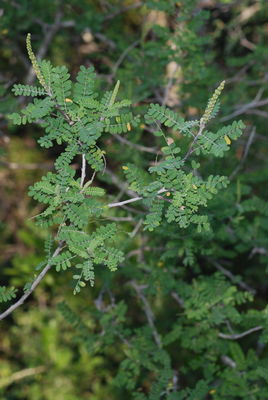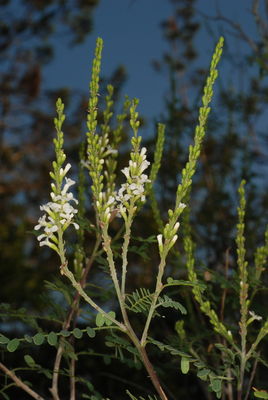The Amorpheae were expanded by Bentham (1865) as subtribe ‘Psoralieae’ of his very broadly drawn Galegeae. The latter also contained the genera now placed in Indigofereae, Brongniartieae, Millettieae, and Robinieae, as well as in the present restricted (but still heterogeneous) Galegeae sens. lat. Both Gray’s and Bentham’s concepts of Psoralieae included genera here placed in Amorpheae, as well as a broadly circumscribed Psoralea. Borissova (Nov. 1964) proposed a tribe Amorpheae containing the single genus Amorpha. Almost simultaneously, Hutchinson (Dec. 1964) introduced a tribe Daleeae (as ‘Daleae’) including four genera: Dalea, Thornbera, Petalostemon, and Kuhnistera, the last three placed as synonyms of Dalea by Barneby (1977).
Hutchinson attempted to use petal insertion as the character separating Daleeae and Psoraleeae, but Barneby (1977) showed that Hutchinson’s definition and interpretation of this character were unsatisfactory. Barneby (1977, 1981) added Apoplanesia, Eysenhardtia, Parryella, Amorpha, Errazurizia, Psorothamnus, and Marina, all formerly placed in Psoraleeae, to Hutchinson’s (1964) Daleeae to produce the concept of Amorpheae as accepted here.
The main character distinguishing Amorpheae lies in the inflorescence position, which is terminal in Amorpheae and axillary in Psoraleeae. Additionally, the leaves of Amorpheae are basically pinnate (although sometimes trifoliolate or unifoliolate by reduction), while those of Psoraleeae are basically trifoliolate (although sometimes palmately >3-foliolate or even pinnate). The basic chromosome number appears to be 10 in Amorpheae (reduced in some species of Dalea) but 11 in Psoraleeae. Stirton (1981a) added further characters that reinforce the distinction: the form of the cotyledons, the positions of the embryo and radicle in the seed, seed shape, fruit structure, and the pollen. Ferguson & Skvarla (1981) also pointed out that the pollens of Psoraleeae and Amorpheae have very little in common. Barneby (1977) suggested that the papilionoid flower of the more derived species of Dalea may have evolved independently from that of other papilionoids, but this hypothesis is rejected by McMahon & Hufford (2004), based on studies of floral development in Dalea, Marina and Psorothamnus (McMahon & Hufford, 2002).
Molecular work (Doyle, 1995) initially placed Amorpheae among the New World tropical tribes, as sister to a clade comprising Lotus and members of the IRLC clade. More recently (e.g., Doyle et al., 2000; Pennington et al., 2001; Kajita et al., 2001), Amorpheae emerges as one of a number of equally-ranked groups with the Dalbergioid and Genistoid clades. Lavin et al. (2001a) included sequences from four genera of Amorpheae (Apoplanesia, Eysenhardtia, Amorpha and Marina) as part of their study of the Dalbergioid clade. Three analyses, each based on a different gene, and one combined analysis using both molecular and morphological data, all agreed firstly in placing Amorpheae as sister to the whole Dalbergioid clade, and secondly in supporting the monophyly of Amorpheae. This is confirmed in subsequent analyses (e.g., Wojciechowski, 2003; Wojciechowski et al., 2004; McMahon & Hufford, 2004). All genera in the tribe were sequenced in the analysis of McMahon & Hufford (2004) and two well supported clades were recognised: the Amorphoid clade comprising Parryella, Amorpha, Apoplanesia, Errazurizia and Eysenhardtia; and the Daleoid clade with Psorothamnus, Marina and Dalea (Fig. 39). Psorothamnus is paraphyletic in the latter study with two monophyletic clades dividing neatly along taxonomic lines. One of these, the Psorodendron clade, is basally branching in the Daleoid clade and McMahon & Hufford (2004) state that this will be resurrected at generic level, thus recognising 9 genera in the tribe. For this account, however, Amorpheae is treated as comprising 8 genera and (245)–247–(248) species (Fig. 39).






